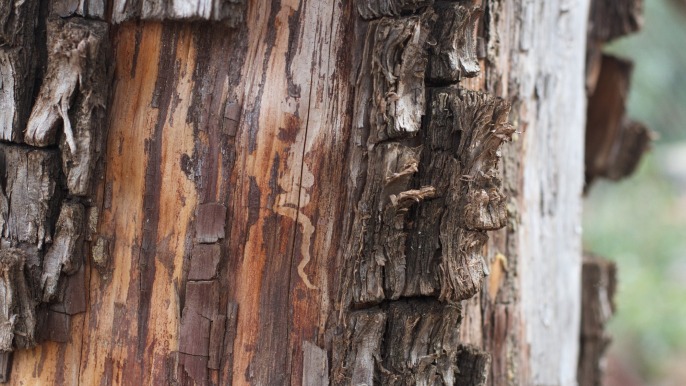The tree’s reaction to wounding is always the same. A certain amount of healthy tissue bordering the wound will be sacrificed to build a buffer between the outside and the inside.
Imagine the young healthy tree, growing strong and fast, no wounds, no problems. Years later, perhaps, it ends up over-pruned, with various storm damage sites on the trunk, a car accident impact too large to be repaired. A strong wind through the day cracking deadwood, and later it’s down lying across the street.
A tree’s whole life will be an ongoing battle with wood rotting fungus. And the fungus will win, but when? The tree’s body is very complex and its many different tissues and growth patterns are engineered to fight the fungus as well as possible.
Back to the young tree. Inside the trunk and branches there is no deadwood; all is a light whitish color with no discoloration, no dark brown wood staining revealing interior deadwood. It is this interior deadwood where fungus thrives and once it gets a hold, it constantly needs new tissue to feed on. Fungi feed on sugars and the complex tissue of trees is made of two main ingredients: lignin, which acts like glue, and cellulose. Cellulose is made of sugars—long-chain complex sugars. These sugars are all that fungi need to thrive.
A tree is wounded whenever the bark is removed. A wound can be made with a pair of pruning shears, a pruning saw, a strong wind that rips off a branch, or a car smashing into the trunk. No matter what the cause, the bark has been removed. The tree’s closed body system now has an opening, a cut. The tree’s reaction to wounding is always the same. A certain amount of healthy tissue bordering the wound will be sacrificed to build a buffer between the outside and the inside. Between the outside of the wound and the living tissue inside, a “wall” will form, the edge of a compartment.
This wall is not a solid structure, but a chemical wall that the tree builds. Composed mainly of phenols and turpenes, which act as an anti-fungal agent, this wall is the first line of defense against invading fungus. The tissue it walls off will soon die and discolor. So powerful is this process in trees that they can wall themselves to death. This is what happens with Dutch Elm Disease, a wilt fungus that moves very quickly through a tree. The tree keeps walling off sections of living tissue in the trunk to stay ahead and eventually walls off enough interior space that the tree cannot function anymore. So much living tissue has been walled off that the tree can no longer keep up with its own demand for water and nutrients. A quick death follows.
Every wound costs the tree energy, first in the lost inside volume of healthy tissue, and second in the energy required to complete and maintain the compartmentalization process. It is important to understand that pruning also causes a major loss of energy with the removal of each branch. Standard tree-care thinning practices never take this into account. Learning to think of the tree in terms of its energy levels will significantly affect the way you prune. You will prune less. From the tree’s perspective, there are no extra branches.









